The Chora Mosque/Kariye Mosque (Kariye Camii) is known across the world for its beautifully maintained mosaics and frescoes. It features noteworthy and magnificent specimens of late-period East Roman painting. In the Middle Ages, the idea of depth in mosaics and the movement manner in figures were of great creative significance, foreshadowing the Renaissance period.
History of Chora Mosque
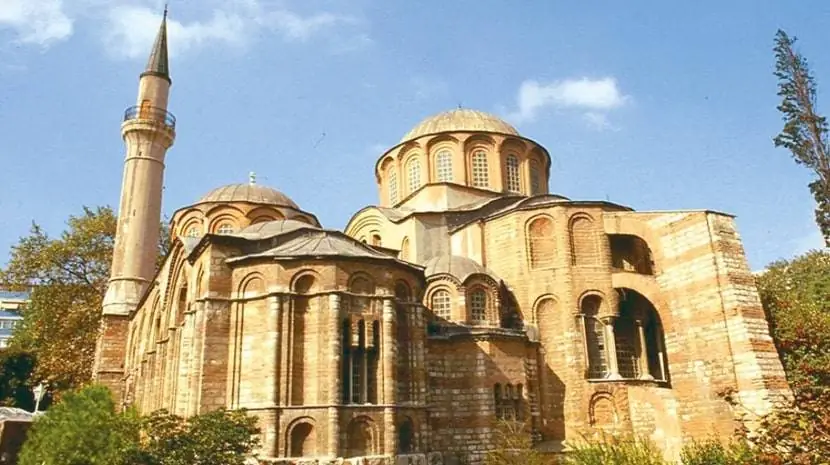
The Turkish word Kariye comes from the ancient Greek word Chora outside the town (land). Before the fifth century, when the city walls were built, there was a church outside the city. Justinianus (527-565) reconstructed the first church in Chora instead of this chapel. In the Komnenoi age, thanks to its proximity to the Blachernae Palace, it served as the chapel for major religious rites.
During the invasion of the Latin period (1204-1261), Chora church (Chora Kirke) was destroyed and the palace Treasurial Minister, Theodore Metochites, rebuilt during the rule of Andronikus II (1282-1328). (1313). To the north it has been extended, an exonarthex has been erected on its west side and a chapel on its south side (Parecclesion).
Chora mosaics and frescoes are the most exquisite instances from the late Byzantine period (14th century). The typical stylistic features include the depths, motions and plastic qualities of figures, and the elongation of forms in those mosaics and frescoes.
Chora Church was transformed into a mosque in 1511 by Vizier Hadim Ali Pasha after it continued its service as a church after the capture of Istanbul in 1453. It was transformed into a museum in 1945 and the mosaics and the frescoes were discovered and brought to light during the restoration carried out in 1948-1959 at the Byzantine Institute of America.
◊ 5 Days Turkey Tour – Istanbul Cappadocia Tour
Things to See in Chora Mosque
Biblical tales can be followed like a visual novel by the mosaics of the ancient Chora church. They’re a bit tough to follow:
♦ The Cycle of the Infancy of Christ
This sequence portrays the narrative of the early years of Jesus Christ, following His birth in the preceding row, until He goes on journey to Jerusalem, beginning at the northern lunette on the western wall of the outer narthex.
♦ The Cycle of the Life of the Virgin
One of the best things to see in the Chora Mosque is the Cycle of the Life of the Virgin. There are 17 pictures on the north wall of the inner narthex that portray the life, encompassing birth, first steps and marriage, of the Virgin Mary.
♦ The Cycle of Christ’s Ministry
Another depiction in Kariye Mosque is the Cycle of Christ’s Ministry. This cycle is divided among the vaults, lunettes and pendentives of the inner narthexes and the outer ones, depicting several familiar miracles as healing a leper, turning the water into wine and reproducing loaves and fish.
♦ Frescoes
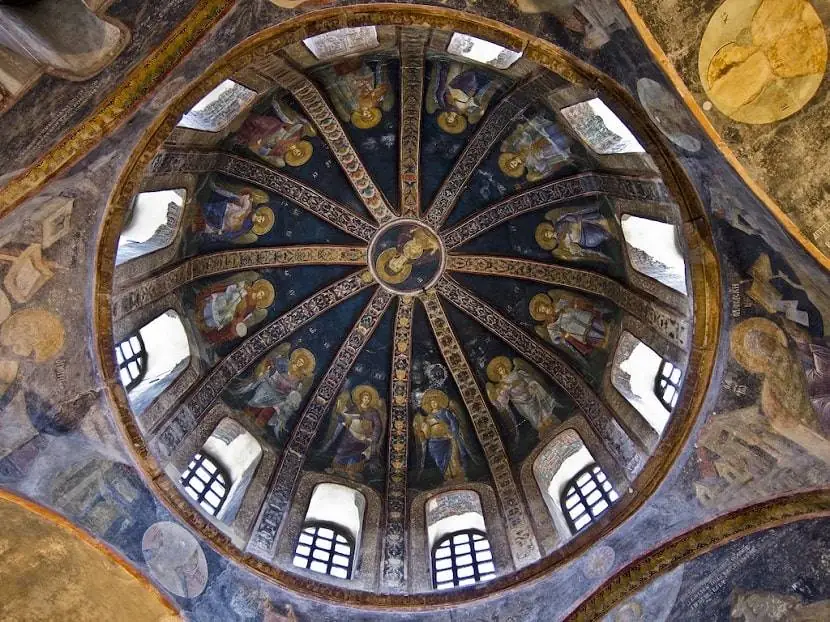
The parecclesion is located to the right of the ship. It is a side chapel designed to store the tombs of the fountain of the church and its family. The frescoes on death and the resurrection represent scenarios borrowed from the Old Testament are adorned. A mighty Christ bringing Adam and Eve out of their sarcophagi with the participation of saints and monarchs, depicts the remarkable image in the apse known as the Anastasis. Under the feet of Christ the gates of hell are seen. The frescoes adorning the cupola showing Mary and 12 accompanying angels are less grandiose but no less magnificent. The Last Judgment displays the scenario of Revelation in bright white with dolphin accents at the ceiling between this dome and the apse.
♦ Mosaics
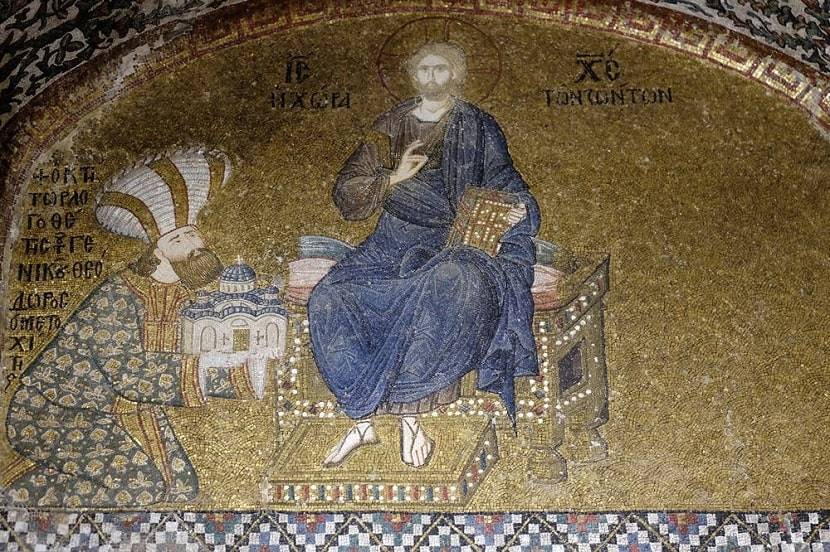
The interior is mostly covered with mosaics portraying Christ’s and the Virgin Mary’s lives. Watch the Khalken Jesus, who shows Christ to Mary and two gifts to him: Prince Isaac Comnenos and Melani, daughter of Michael VIII, the Byzantine emperor. This is in the inner narthex below the right dome. On the cupola itself is a wonderful image of Jesus and his forefathers (The Genealogy of Christ). A serenely lovely mosaic of Mary and the Baby Jesus lies on the left dome of the narthex, accompanied by its ancestors.
◊ 7 Days Turkey Tour Package – Western Turkey Tour
Chora Mosque Location and Map
Chora Museum is located in the Fatih district district of Edirnekapi, a short walk from the public bus station Edirnekapi. Please see the map of the location.
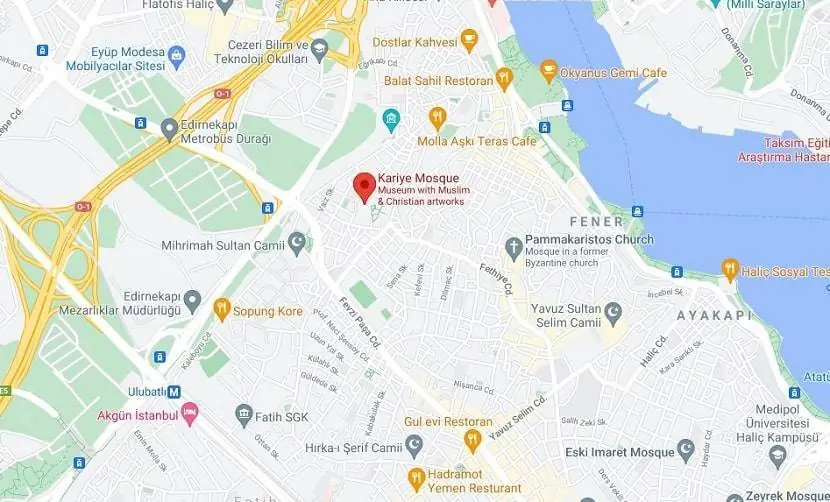
How to Get to Chora Mosque
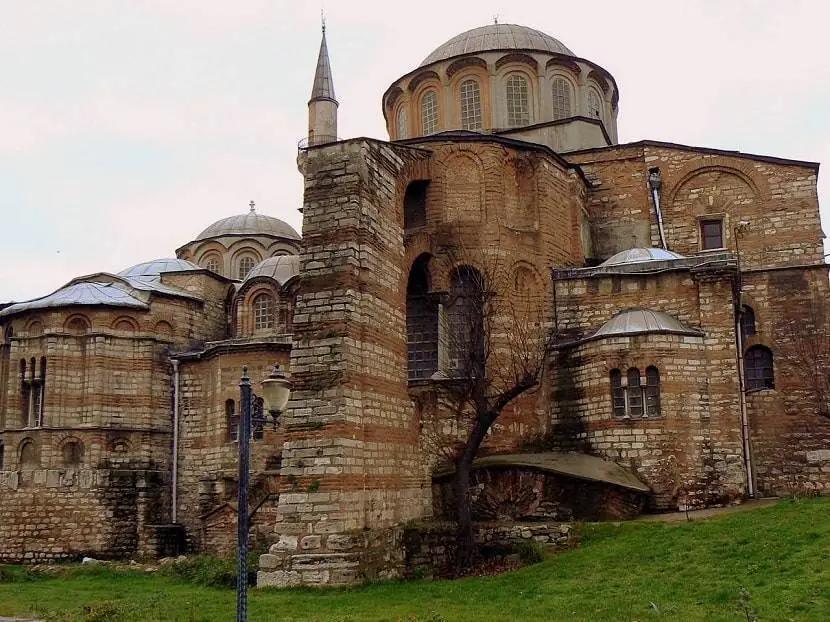
Various travel methods to reach Chora Museum or Kariye Mosque are available.
You can get off at the stop Edirnekapi from the Asian side of Istanbul on the metro bus. And go away. There are several public bus services run by Seyrantepe, Topkapi, Kadikoy, Levent, Beyazit, Mecidiyeköy and Taksim to Edirnekapi. There are also bus services.

